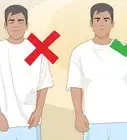This article was co-authored by Shira Tsvi. Shira Tsvi is a Personal Trainer and Fitness Instructor with over 7 years of personal training experience and over 2 years leading a group training department. Shira is certified by the National College of Exercise Professionals and the Orde Wingate Institute for Physical Education and Sports in Israel. Her practice is based in the San Francisco Bay Area.
There are 15 references cited in this article, which can be found at the bottom of the page.
wikiHow marks an article as reader-approved once it receives enough positive feedback. In this case, 80% of readers who voted found the article helpful, earning it our reader-approved status.
This article has been viewed 214,621 times.
To build upper-body mass and increase the size of your muscles, you'll need to make sure you're exercising enough and doing the correct type of exercise. Not every upper-body exercise will help you build mass. Some exercises are great for building strength and some are better for building mass. It's generally a combination of different types of strength training exercises that will help you get a bigger upper-body.
Things You Should Know
- Do exercises that target upper body muscles, like pull-ups, push-ups, dips, and dumbbell rows.
- Do high amounts of repetitions to build mass. High repetitions with light weights are better than low repetitions with heavy weights.
- Work out your upper body every other day.
Steps
Exercises for Upper-Body Muscle Mass
-
1Do pull-ups. This is a great compound exercise that works a variety of muscles in your back, arms and shoulders.[1]
- Grab a pull-up bar with both hands. Position your hands so they are a little emote than shoulder width apart and have your palms facing away from you.
- Pull yourself up until your chin is just above the bar. Slowly lower your body back down until your arms are almost straight. Repeat the exercise as many times as necessary.
-
2Add push ups to your routine.[2] One of the best things about push ups is, because they are bodyweight exercises, you can do them anywhere. You can also do all sorts of variations to increase the difficulty.[3]
- Begin with your hands on the ground, directly under your shoulders, your legs extended straight behind you. Your back should be straight, your core tight and engaged.[4]
- Lower your body, keeping your back straight and your elbows against you; don't let them flair out to the sides. Do this by pulling your shoulder blades back and down. Lower yourself until your chest grazes the floor.[5]
- Push yourself back up to the starting position. Make sure your core remains engaged.[6]
- Repeat 10 to 20 reps.[7]
Advertisement -
3Incorporate dips. Again, this is another type of compound exercise that works a large variety of muscles including your back and arms. It specifically is targeting the back of your arms and shoulders.[8]
- To get the most benefit from this exercise use parallel bars. Place one hand on each bar and grip tightly. Suspend yourself by lifting your feet off the ground — you'll need to engage all your arm and back muscles to do this.
- Slowly lower yourself down by bending your elbows. Bend them so they are facing backwards while keeping your arms parallel to your body.
- Lower until your upper arms are about parallel to floor. Push yourself back up to the starting position. Lower again to start another rep.
-
4Try incline chest press. This exercise is a great move to build strength and mass. It works the chest and arms.[9]
- Lie back on an adjustable bench that's set to a 30-45 degree angle. Hold a dumbbell in each hand with your fists facing away from you.
- Lower the dumbbells until they are about chest height and then slowly press the dumbbells back up until your arms are fully extended.
- Bring the dumbbells back down to start another repetition.
-
5Do dumbbell rows. This exercise helps work your upper back especially your lats and traps.[10]
- Hold a dumbbell in each hand. While keeping a slight bend in your knees, bend over at the waist with your back straight.
- Extend your arms down in front of you so they are somewhat hanging in front of your body.
- Bend your arms and bring the dumbbells up to meet the side of your body. Keep your arms flush against your body the entire time.
- Slowly lower the dumbbells back down in front of your body. Bring the dumbbells back up to start another rep.
-
6Try reverse flyes. This is an exercise that targets the back of the shoulders and your upper back.[11]
- Lie face down on an incline bend. Hold a dumbbell in each hand with your palms facing in towards each other.
- To start, your arms should be extended in front of you. Slowly lift your arms out to the sides so they are perpendicular to your body. Stop and hold when you arms are at chest level.
- Squeeze your shoulder blades together to hold the position for the most benefit from this exercise.
- Slowly lower back down to the starting position. Repeat as necessary.
-
7Incorporate bicep curls. Although bicep curls are not considered a compound exercise, they can help specifically tone the front of your arms which is a very desirable place to have more muscle definition.
- Hold a dumbbell in each hand with your arms down by your sides. Make sure your palms are facing away from your body.
- Keeping your upper arms still and flush with your chest, lift the dumbbells up towards your shoulders. Lift until the your hands reach your shoulder.
- Slowly lower the dumbbell back down to the starting position. Repeat as necessary.
Building Upper-Body Muscle Mass
-
1Do higher amounts of repetitions. There are two main types of exercises you can do in regards to weight lifting. You can choose lower amounts of repetitions or higher amounts of repetitions. Studies have shown that higher reps build more muscle mass.[12] High volume sets, three to six, with repetitions ranging from six to 12, tend to increase muscle size.
- When you begin your workout to help build a bigger upper-body, focus on a higher amount of repetitions with each exercise you do.
- Higher reps do build strength, but not as much as lower repetitions. If you want to build mass and strength include a combination of both high and low rep exercises.[13]
-
2Include mostly compound exercises over isolation exercises in your routine. Compound moves generally will help you reach your goal of building mass better than isolation exercises.
- Compound exercises are those that typically use free weights or body weight and recruit multiple joints and muscles to perform. These types of exercises typically are the best for building more mass.[14]
- Exercises like deadlifts and squats are examples of compound exercises.
- Isolation exercises are those that target only a small group of muscles - like bicep curls. These are great for more fine toning or tweaking, not to build mass.[15]
-
3Train your upper-body every other day. When you're doing any sort of physical activity, it's important to include time for rest. This is particularly true when you're targeting a specific set of muscles.
- Rest is the time where your muscles get stronger and increase in size. This doesn't actually happen during the activity itself.[16]
- Take rest days during the week in addition to making sure you do not work your upper-body each day. Aim for every other day or 2-3 days a week of upper-body training.
- When you do not rest and recover properly, you can suffer muscle fatigue, poor performance and poor results.[17]
-
4Include cardio. Although cardio doesn't do much to bulk up your upper-body, it's still an essential activity to include in any workout.
- It's typically considered a good idea to include about 150 minutes of moderate intensity cardio each week.
- Many activities can count towards "moderate intensity" including jogging, running or doing an aerobics class. However, consider activities like rowing that increase your heart rate but also are working multiple muscles in your upper-body.
Eating to Support Increased Muscle Mass
-
1Increase your calories. In order to see significant gains in muscle mass and muscle size you'll need to increase your overall calorie intake.[18] Eating very light or following a low calorie diet won't support increased muscle mass.
- You don't need to eat large quantities of extra calories daily, but you do want to have a little surplus. This could be anywhere from 150-250 extra calories daily.[19]
- The extra calories will go to support your body through exercise and the recovery and repair process of your muscles.
- Consume these extra calories from wholesome, nutritious foods. Go for lean protein, whole grains or a fruit or vegetable. Try not to get extra calories from sugars, fats or processed foods.
-
2Consume adequate protein. To help you build muscle and support your intense weight training activities, you'll need to make sure you're eating an adequate amount of protein each day.[20]
- It's typically recommended to consume about 0.8 g of protein per kg of body weight. However, if you're working on body building you may need more protein or about 1.0 g per pound of body weight.[21]
- To find your body weight in kg, divide your weight in pounds by 2.2. For example if you weight 150 lbs your weight in kg is about 68.1 kg.
- Choose a variety of lean protein sources like: eggs, poultry, lean beef, tofu, seafood, nuts or low-fat dairy products.
-
3Refuel appropriately. Another very important part of your work out and goal to increasing muscle mass is refueling after your workout. Without proper nutrition after your lifting session, you might not see the gains you're looking for.
- Within an hour of completing your workout, you need to refuel. Waiting longer isn't advisable. Your window for the best recovery is 30 – 45 minutes after your workout.[22]
- Refuel with higher carbs and a significant amount of protein. You need to replace the energy you used during the workout in addition to getting in the protein to help your body repair and restore the muscles you worked.
- Go for a protein shake, protein bar with a piece of fruit, a small meal (like baked chicken and sweet potatoes), chocolate milk or trail mix.
Expert Q&A
-
QuestionWhy is it so hard for me to build muscle mass?
 Jason WhalenJason Whalen is a Certified Personal Trainer and the Owner of JWWFitness in Scottsdale, Arizona. With over a decade of experience, Jason specializes in strength, core, endurance, and plyometric training programs for those looking to improve their fitness, overall health, and sports performance. He holds a BA in Exercise Science from Eastern New Mexico University. Jason is also a Nutrition Therapist and a Member of the National Strength and Conditioning Association (NSCA). He was voted the Best of 2012 for Personal Trainers by Kudzu and was featured in Echo Magazine.
Jason WhalenJason Whalen is a Certified Personal Trainer and the Owner of JWWFitness in Scottsdale, Arizona. With over a decade of experience, Jason specializes in strength, core, endurance, and plyometric training programs for those looking to improve their fitness, overall health, and sports performance. He holds a BA in Exercise Science from Eastern New Mexico University. Jason is also a Nutrition Therapist and a Member of the National Strength and Conditioning Association (NSCA). He was voted the Best of 2012 for Personal Trainers by Kudzu and was featured in Echo Magazine.
Certified Personal Trainer A lot of this is just genetic. It's just naturally easy for some people to gain muscle mass, while for some folks it's extremely easy. Unfortunately, there just isn't a lot you can do here; you may just need to work a little harder to build your upper body up.
A lot of this is just genetic. It's just naturally easy for some people to gain muscle mass, while for some folks it's extremely easy. Unfortunately, there just isn't a lot you can do here; you may just need to work a little harder to build your upper body up. -
QuestionWhat are the best exercises for upper body mass?
 Jason WhalenJason Whalen is a Certified Personal Trainer and the Owner of JWWFitness in Scottsdale, Arizona. With over a decade of experience, Jason specializes in strength, core, endurance, and plyometric training programs for those looking to improve their fitness, overall health, and sports performance. He holds a BA in Exercise Science from Eastern New Mexico University. Jason is also a Nutrition Therapist and a Member of the National Strength and Conditioning Association (NSCA). He was voted the Best of 2012 for Personal Trainers by Kudzu and was featured in Echo Magazine.
Jason WhalenJason Whalen is a Certified Personal Trainer and the Owner of JWWFitness in Scottsdale, Arizona. With over a decade of experience, Jason specializes in strength, core, endurance, and plyometric training programs for those looking to improve their fitness, overall health, and sports performance. He holds a BA in Exercise Science from Eastern New Mexico University. Jason is also a Nutrition Therapist and a Member of the National Strength and Conditioning Association (NSCA). He was voted the Best of 2012 for Personal Trainers by Kudzu and was featured in Echo Magazine.
Certified Personal Trainer You want to emphasize compound movements, not isolated exercises. So, when a lot of folks want to build up their biceps, for example, they'll start doing bicep curls. However, doing squat to bicep curls or bent over rows are going to be much better for muscle development.
You want to emphasize compound movements, not isolated exercises. So, when a lot of folks want to build up their biceps, for example, they'll start doing bicep curls. However, doing squat to bicep curls or bent over rows are going to be much better for muscle development. -
QuestionWhat should I eat if I want to bulk up?
 Jason WhalenJason Whalen is a Certified Personal Trainer and the Owner of JWWFitness in Scottsdale, Arizona. With over a decade of experience, Jason specializes in strength, core, endurance, and plyometric training programs for those looking to improve their fitness, overall health, and sports performance. He holds a BA in Exercise Science from Eastern New Mexico University. Jason is also a Nutrition Therapist and a Member of the National Strength and Conditioning Association (NSCA). He was voted the Best of 2012 for Personal Trainers by Kudzu and was featured in Echo Magazine.
Jason WhalenJason Whalen is a Certified Personal Trainer and the Owner of JWWFitness in Scottsdale, Arizona. With over a decade of experience, Jason specializes in strength, core, endurance, and plyometric training programs for those looking to improve their fitness, overall health, and sports performance. He holds a BA in Exercise Science from Eastern New Mexico University. Jason is also a Nutrition Therapist and a Member of the National Strength and Conditioning Association (NSCA). He was voted the Best of 2012 for Personal Trainers by Kudzu and was featured in Echo Magazine.
Certified Personal Trainer Try to increase your overall calorie intake. Emphasize your proteins and carbohydrates. That's going to be the best way to bulk up and increase your muscle mass.
Try to increase your overall calorie intake. Emphasize your proteins and carbohydrates. That's going to be the best way to bulk up and increase your muscle mass.
Warnings
- Building muscle requires the use of heavy weights, which can be dangerous. Minimize the danger by learning proper technique from an expert and having an attentive spotter at all times.⧼thumbs_response⧽
- Always talk to your doctor before starting a new workout routine.⧼thumbs_response⧽
References
- ↑ http://www.bodybuilding.com/fun/ridgely9.htm
- ↑ Shira Tsvi. Personal Trainer & Fitness Instructor. Expert Interview. 7 January 2020.
- ↑ http://greatist.com/fitness/how-do-perfect-push
- ↑ http://greatist.com/fitness/how-do-perfect-push
- ↑ http://greatist.com/fitness/how-do-perfect-push
- ↑ http://greatist.com/fitness/how-do-perfect-push
- ↑ http://greatist.com/fitness/how-do-perfect-push
- ↑ http://www.bodybuilding.com/fun/ridgely8.htm
- ↑ http://www.bodybuilding.com/fun/schultz51.htm
- ↑ http://www.bodybuilding.com/fun/schultz63.htm
- ↑ http://www.bodybuilding.com/exercises/detail/view/name/reverse-flyes
- ↑ http://www.bodybuilding.com/fun/high-reps-low-reps-which-rep-scheme-is-best.html
- ↑ http://www.bodybuilding.com/fun/high-reps-low-reps-which-rep-scheme-is-best.html
- ↑ http://www.bodybuilding.com/fun/6-compound-movements-build-mass.htm
- ↑ http://www.bodybuilding.com/fun/sclark55.htm
- ↑ http://www.bodybuilding.com/fun/behar2.htm
- ↑ http://www.bodybuilding.com/fun/behar2.htm
- ↑ http://www.mensfitness.com/training/build-muscle/10-reasons-youre-not-building-muscle-0/slide/6
- ↑ http://www.mensfitness.com/training/build-muscle/10-reasons-youre-not-building-muscle-0/slide/6
- ↑ Shira Tsvi. Personal Trainer & Fitness Instructor. Expert Interview. 7 January 2020.
- ↑ http://www.menshealth.co.uk/food-nutrition/muscle-foods/how-much-protein-should-i-eat
- ↑ http://www.menshealth.com/fitness/pound-size
About This Article
To get a big upper body, start by doing weight lifting exercises, like dumbbell rows and reverse flys, which are good for building mass because they work multiple joints and muscles. Try to do 3-6 sets of 6-12 repetitions. Then, make sure to take rest days in between workouts so your muscles can recover. Additionally, incorporate about 150 minutes of moderate intensity cardio each week. For example, try jogging or taking an aerobics class, or try an activity like rowing to raise your heart rate while working your upper body at the same time. For more tips from our Fitness co-author, like how to eat after a workout to maximize its effects, read on!
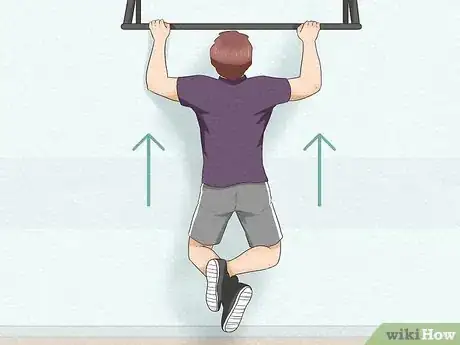
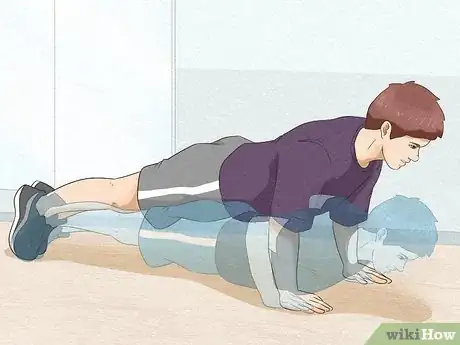
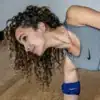
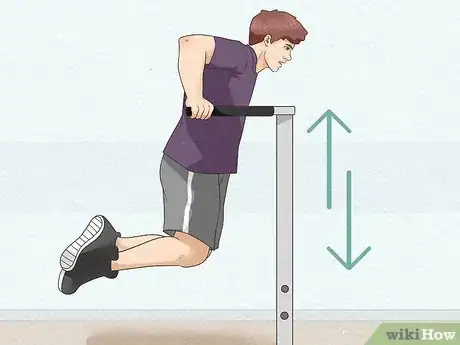
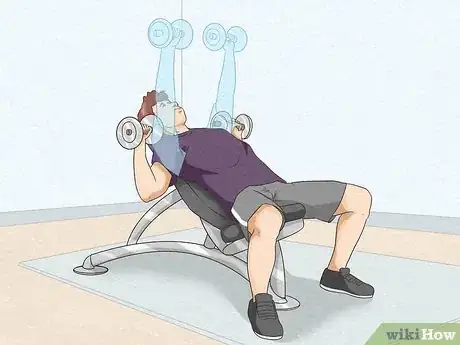
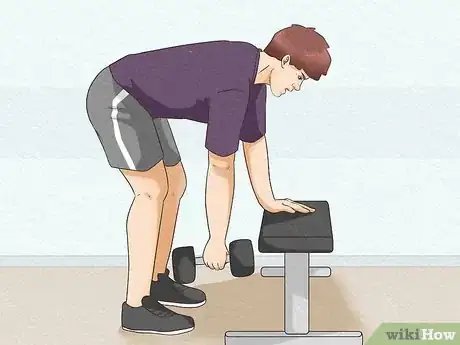
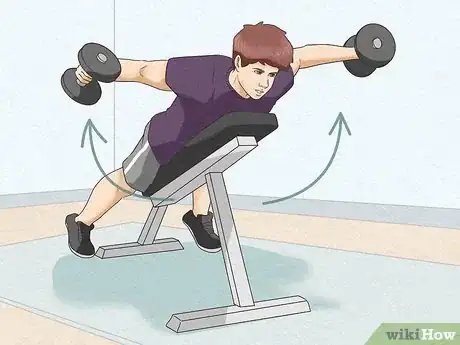
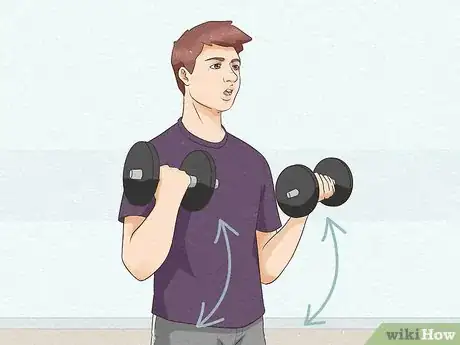
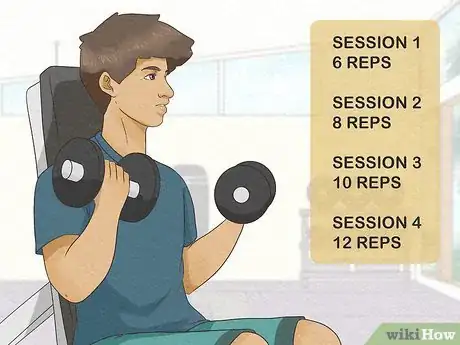
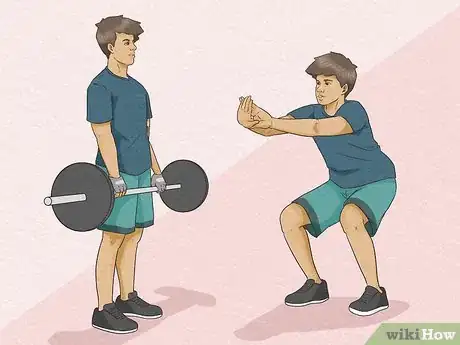
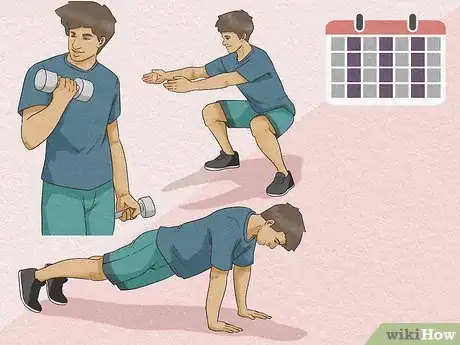
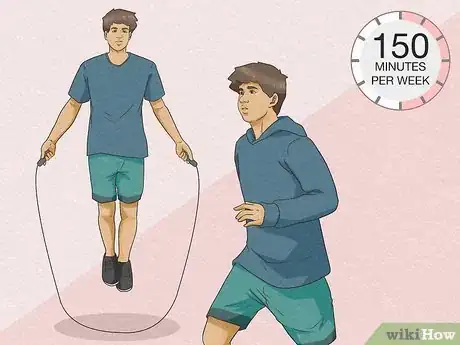
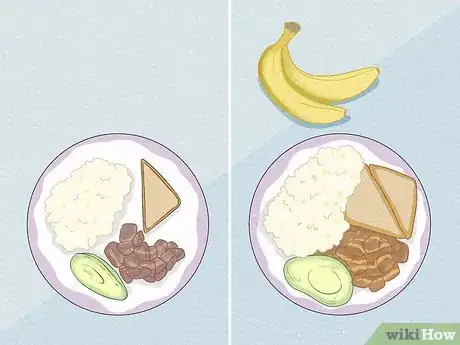
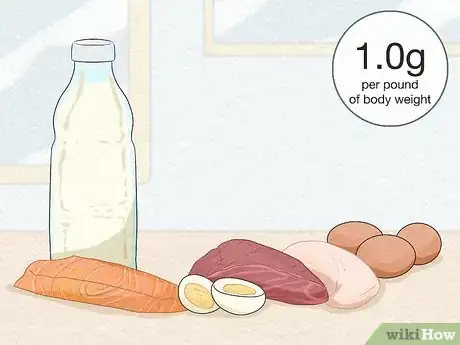
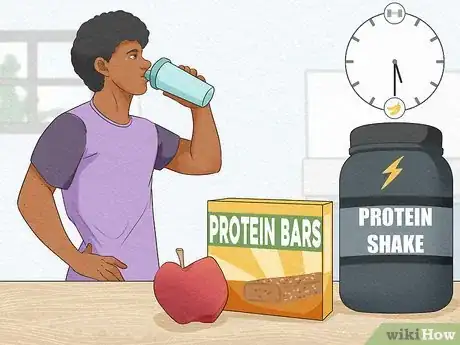
-Step-10-Version-5.webp)



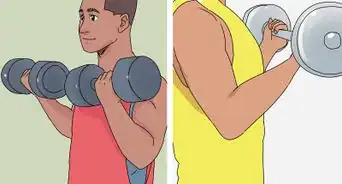

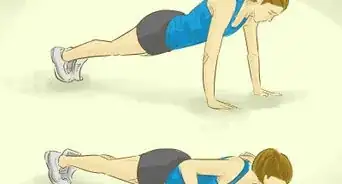
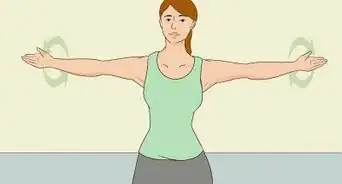
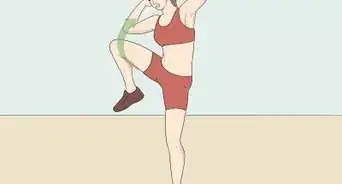








-Step-10-Version-5.webp)

